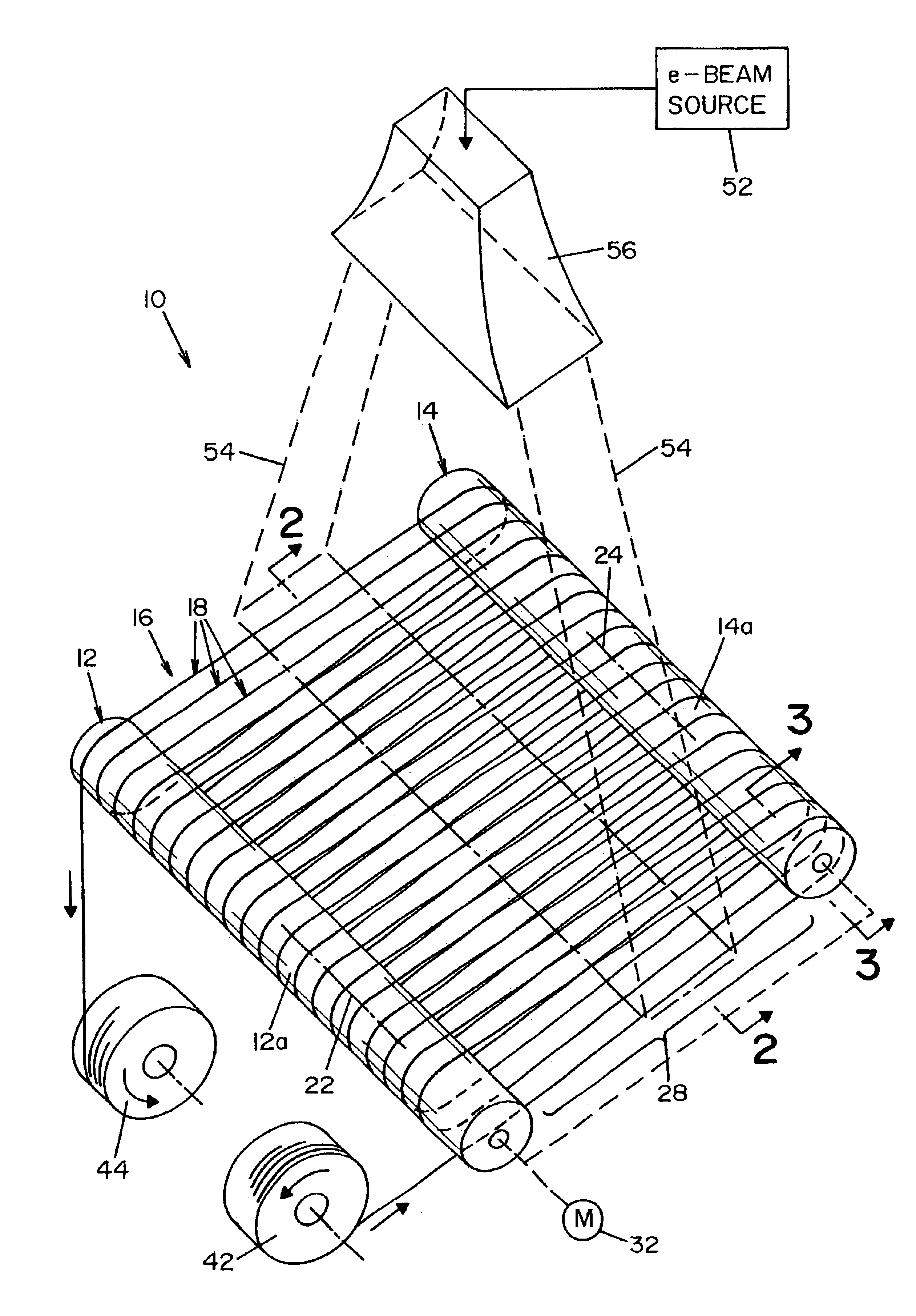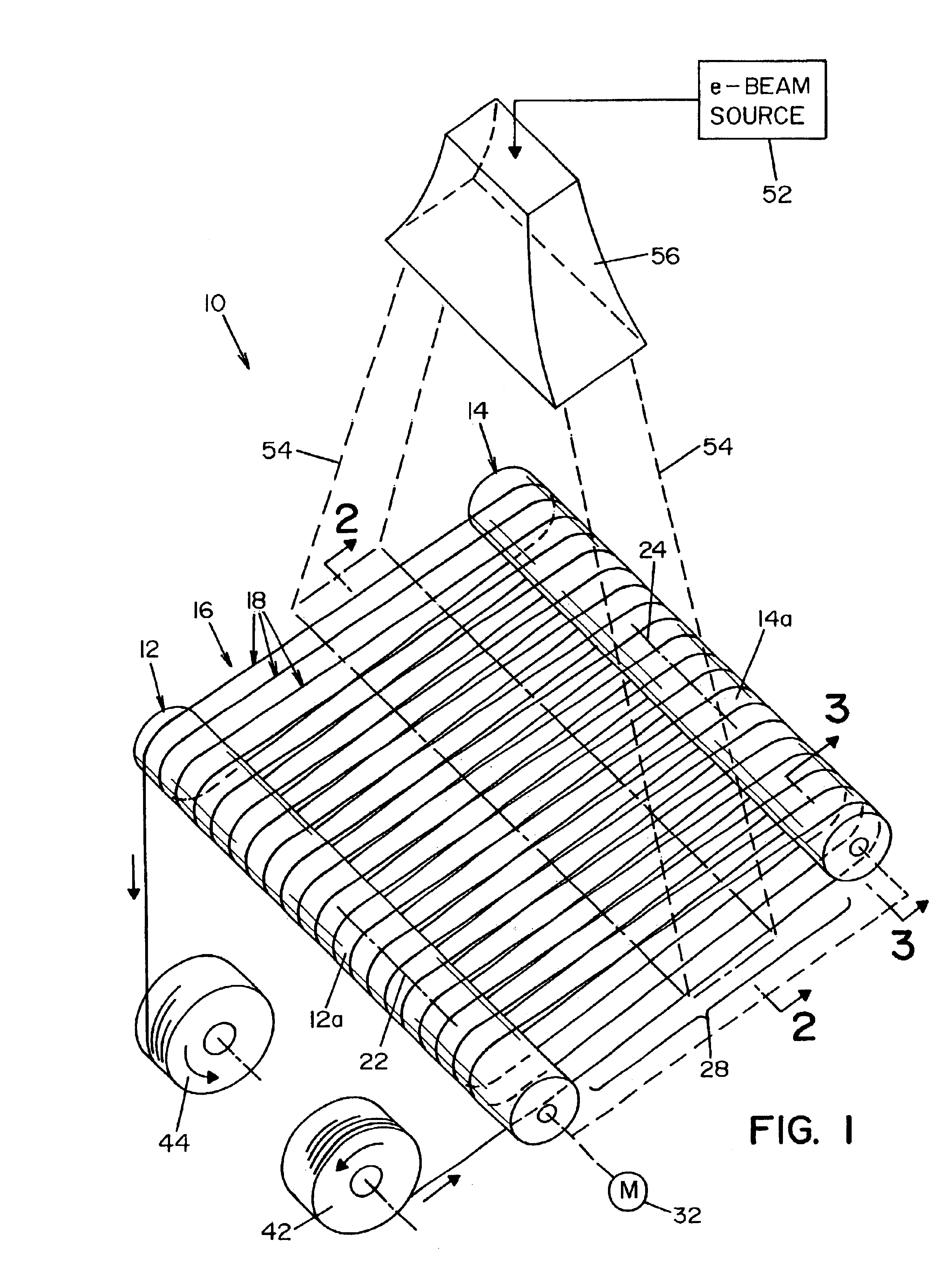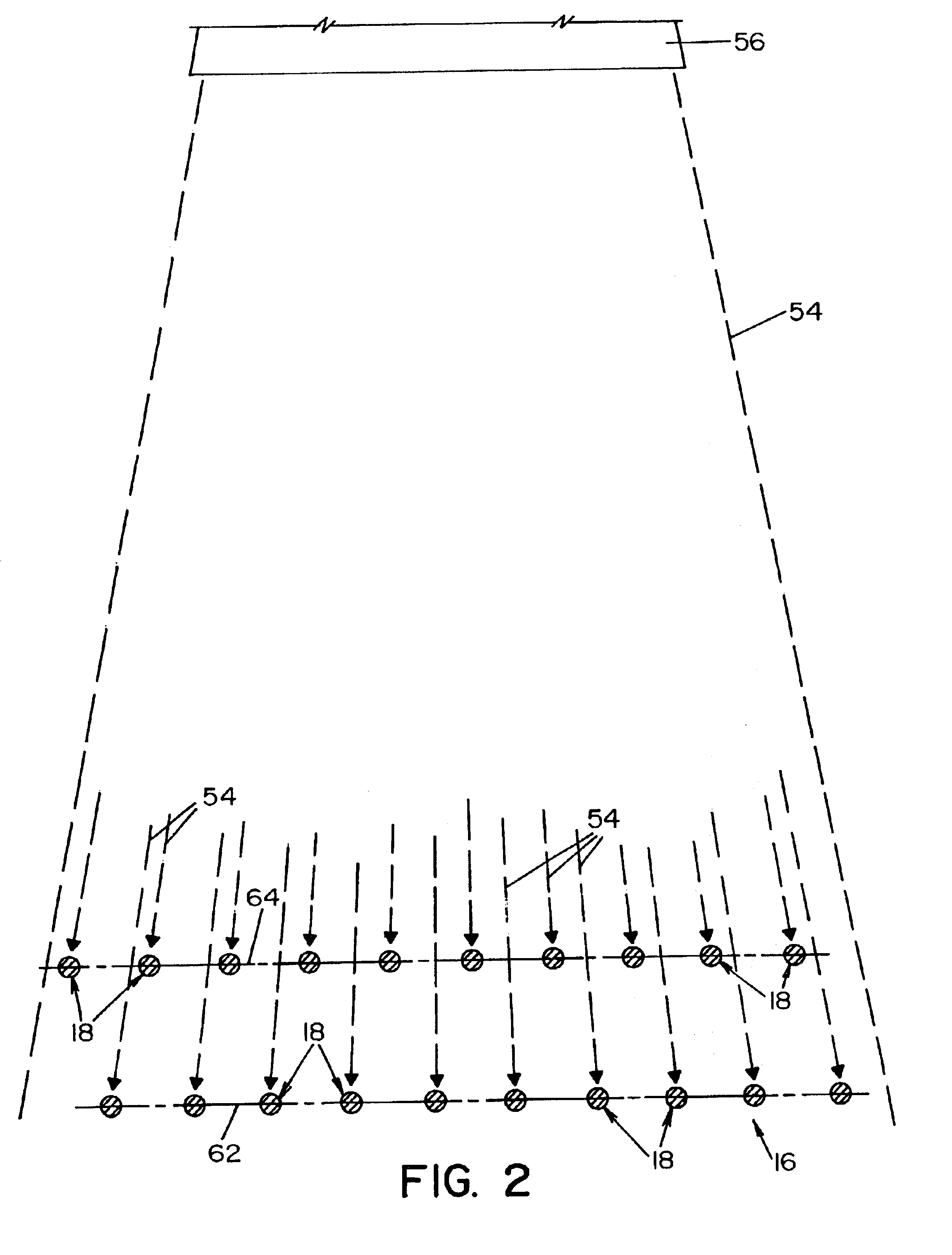Method of irradiating organic materials
a technology of organic materials and irradiation methods, which is applied in the field of irradiation methods of organic materials, can solve the problems of irradiation of containers, which are typically metals, and unsatisfactory discoloration of cotton materials, and achieve the effects of uniform radiation dose, less susceptible to burning, and convenient handling
- Summary
- Abstract
- Description
- Claims
- Application Information
AI Technical Summary
Benefits of technology
Problems solved by technology
Method used
Image
Examples
example
[0032]A processed, pure cotton, i.e., cotton that has been cleaned and processed to remove cotton seeds, is formed into a ½″ diameter rope. A cotton rope sold by Rocky Mount Cord Company, in Rocky Mount, N.C. under the trade designation Romoco is used. The cotton rope has an initial tensile strength of about 600 psi. The cotton rope is irradiated as described above by repeatedly conveying the rope through an e-beam around spaced-apart rollers. With each pass through the e-beam, the cotton rope receives an incremental dose of radiation from the e-beam. The cotton rope is repeatedly passed through the e-beam until it has received a total dose of radiation in the amount of 800 kGy (80 Mrads), receiving such dose in a plurality of smaller, incremental doses.
[0033]The irradiated cotton shows minimal discoloration, and the resultant rope has a tested tensile strength of about 100 psi. This tensile strength is sufficient to allow the irradiated cotton rope to be wound onto a roll for subse...
PUM
| Property | Measurement | Unit |
|---|---|---|
| tensile strength | aaaaa | aaaaa |
| tensile strength | aaaaa | aaaaa |
| lengths | aaaaa | aaaaa |
Abstract
Description
Claims
Application Information
 Login to View More
Login to View More - R&D
- Intellectual Property
- Life Sciences
- Materials
- Tech Scout
- Unparalleled Data Quality
- Higher Quality Content
- 60% Fewer Hallucinations
Browse by: Latest US Patents, China's latest patents, Technical Efficacy Thesaurus, Application Domain, Technology Topic, Popular Technical Reports.
© 2025 PatSnap. All rights reserved.Legal|Privacy policy|Modern Slavery Act Transparency Statement|Sitemap|About US| Contact US: help@patsnap.com



